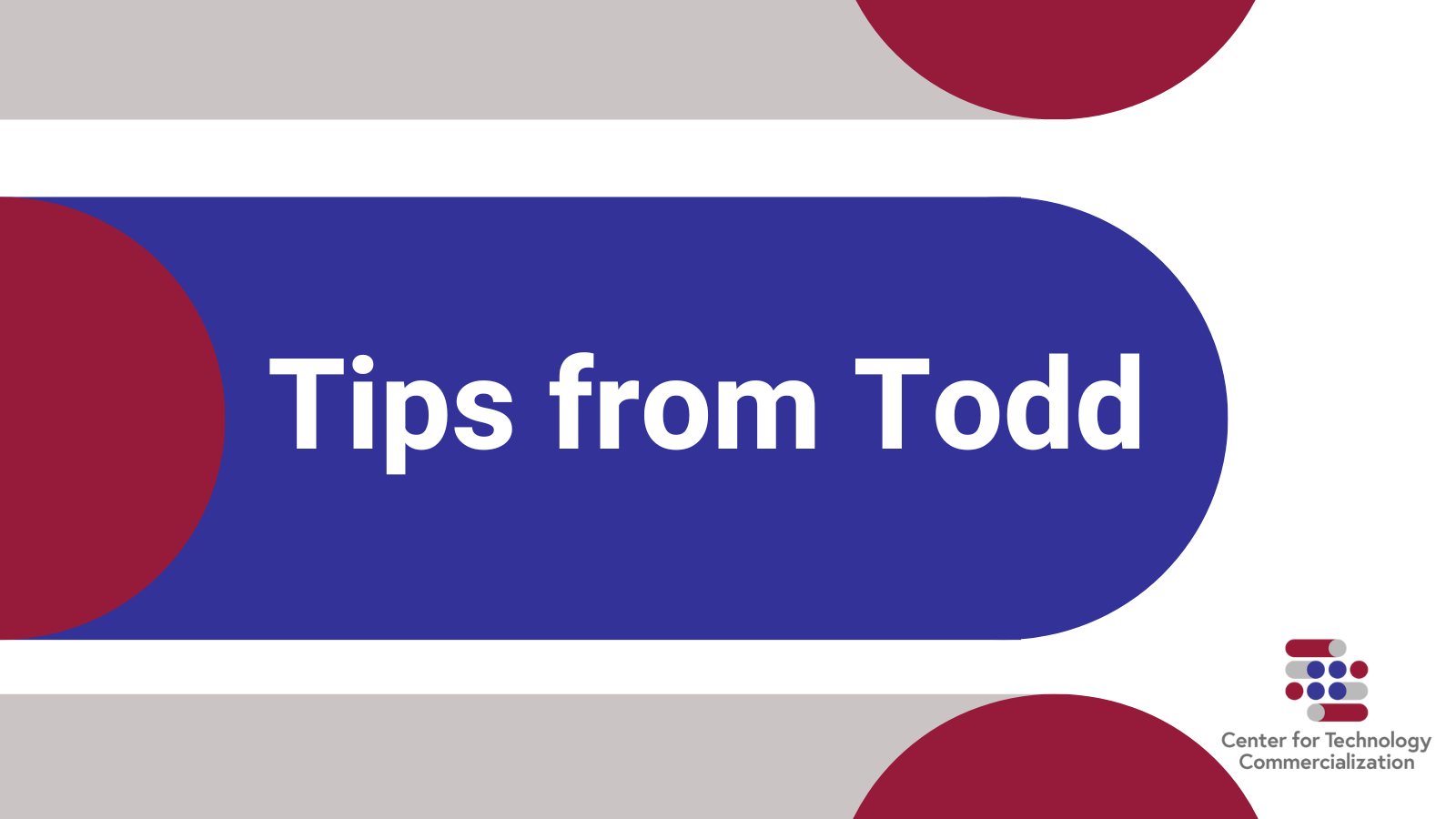A commercialization plan can be similar to a business plan in many respects, and should include a clear focus on the following topics, supported by customer discovery interviews, data, references, and quotations wherever possible. The agencies provide guidance on Phase 2 commercialization plans, so make sure to follow carefully the specific agency guidance for your application.
1. Technology Description – Include what is unique and innovative, the discovery, insight, secret sauce that makes it work and overcomes the shortfalls of the state-of-the-art.
2. Patent position, patent landscape: prior art, freedom to operate analysis
3. Commercial applications of the technology.
4. Market description, market segments, market size, market/customer validation
5. Competitive landscape
6. Market Barriers and other risks
7. Revenue Model – Discuss how you will make money and what is required to be profitable. For products, discuss what you understand about pricing and indicate the level of validation for this model.
8. Go To Market Strategy – Discuss exactly who you will target initially and long term, and why you will target them, and how you will reach them. For products and devices, think about how to get the first 3 years’ worth of customers, and “evidence” that the strategy will work, and the financial and human resources needed to get you there (product development, patent/legal, regulatory approval, marketing and sales, etc.) and how you will obtain these financial and human resources (financial plan). For life science and medical technology, it might be more appropriate to map out a partnering or licensing strategy, and a regulatory strategy.
9. Metrics and Milestones – What are the key business drivers, metrics, and milestones that need to be achieved to reduce business risk and advance the business?
10. Commercial Team and Partners – what are the partners and team needed to execute on this Plan? What is the status and plans to build out this team?
Having reviewed dozens of SBIR/STTR Phase 2 commercialization plans, here are some of the top problems and weaknesses I have seen:
1. Commercialization “Strategy” – no strategy, just a market study, all secondary research, or just a technology description with no strategy.
2. No serious pain (clear, compelling, intensely painful problem statement).
3. No value proposition or customer segment validation (A common untested assumption/premise by the entrepreneur is that customers understand the shortcomings of the status quo and they will buy exactly what is being proposed at the price being asking and providing no plausible argument of why they will buy.)
4. No pricing validation.
5. No channel strategy.
6. No costing including no customer acquisition strategy or cost and no manufacturing/distribution costs.
7. No assessment of product development costs and regulatory costs to get to a market-ready product.
8. No strategy of how to finance from now to commercial sales and breakeven.
9. No business model validated or even hypothesized.
10. No “Go to Market” strategy clear definition of the initial target market segment.
11. No key milestones that show measurable progress and reduced risk.
12. No success metrics.
13. No quantifiable impact (public health, economy, employment, energy, environment, exports) if successful and no solid analysis of the total addressable market.
14. No discussion of intellectual property (IP) and patents or IP strategy (strength of patents, defensibility, freedom to operate).
These items refer to business plan weaknesses but are also relevant for commercialization plans.
15. Covers the technology description rather than market and business opportunity
16. Insufficient problem statement, why is this significant, what/how big of a problem is the current alternative and for how many customers/patients and for what financial opportunity and value proposition that will drive market demand?
17. Basically a technology and market description with little to no business model and go to market strategy, or you could say no validated business model.
18. The SWOT is a SWOT of the technology/product, not the business/business model (SWOT = Strengths, Weaknesses, Opportunities, Threats analysis).
19. No IP discussion even though licensing out is the presumed business model.
20. Projections not validated and everything pulled out of the air or crudely estimated rather than well supported by analysis, data, customer interviews, and references.
